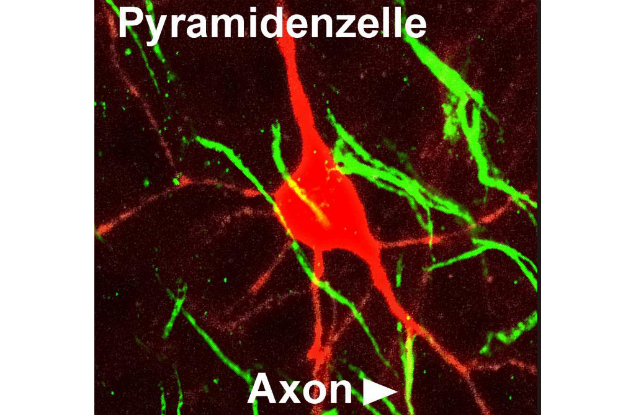A strange new type of nerve cell, or neuron, has been observed in the brain that transmits information without involving the cell body – and, incredibly, it appears to be better at transmitting information than regular brain cells.
Neurons rapidly fire messages around our bodies by transmitting electrical signals to one another. Although these cells vary in shape and size, they all have the same general design: signals are received by a nerve cell’s finger-like dendrites, transmitted through its round cell body, and then passed on via the cell’s long, thin axon.
However, a team led by researchers from Heidelberg University in Germany have discovered a new type of neuron in the brain, which bypasses the cell body altogether and has the axon attach directly to a dendrite.
They described the new cell in the journal Neuron at the end of September.
Just like a bypass road on a highway, this new cell shape speeds up the transmission of information to other neurons.
“Input signals at this dendrite do not need not be propagated across the cell body,” Christian Thome, a neuroscientist from Heidelberg University and one of the lead authors of the study, explained in a press release.
The researchers discovered the cell in the hippocampus of mice, the brain region associated with memory. The neurons in this region are known as pyramidal cells because of their triangular cell bodies.
To investigate how the axon was connecting in these cells, the reserachers used fluorescent red protein that attached to the base of these pyramidal axons. They were expecting them to connect to the cell body, but instead were surprised that many were in fact attaching to a dendrite.
“We found that in more than half of the cells, the axon does not emerge from the cell body, but arises from a lower dendrite,” said Thome.
They then tested whether these special axon-attached dendrites behaved differently to regular ones, by using a form of the neurotransmitter glutamate, a chemical released by nerve cells to transmit messages, that can be activated with light.
Using a high-resolution microscope, the scientists aimed a beam of light directly at a specific dendrite, triggering the glutamate, and activating a signal into the neuron.
They found that the dendrites connected directly to an axon responded strongly to even the smallest spike in neurotransmitter, and were therefore much better at passing a message on.
“Our measurements indicate that dendrites that are directly connected to the axon, actively propagate even small input stimuli and activate the neuron,” said Tony Kelly, the co-author, from the University of Bonn, also in Germany, in the release. The researchers are calling this new method of transmitting signals ‘privileged synaptic input’.
Using a computer simulation, they found that this effect would be particularly enhanced when the messages from other dendrites was slowed down by suppressing signals in the cell body.
“That way, information transmitted by this special dendrite influences the behaviour of the nerve cell more than input from any other dendrite,” said Kelly.
The next step is for them to figure out which biological functions are being sped up by these special dendrites.
-
Primary Widget Area
-
This theme has been designed to be used with sidebars. This message will no
longer be displayed after you add at least one widget to the Primary Widget Area
using the Appearance->Widgets control panel.
- Log in

